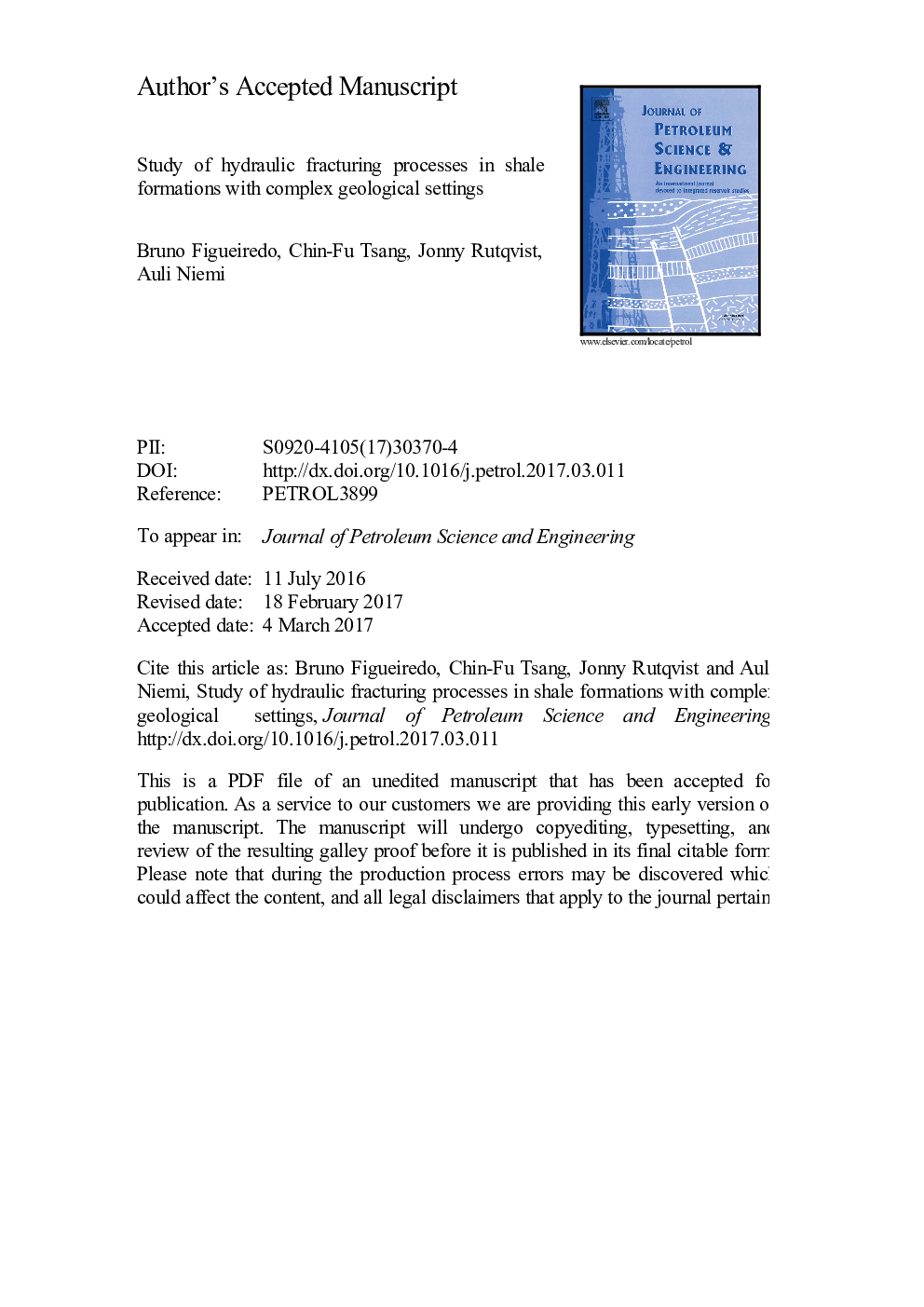| کد مقاله | کد نشریه | سال انتشار | مقاله انگلیسی | نسخه تمام متن |
|---|---|---|---|---|
| 5484280 | 1522789 | 2017 | 31 صفحه PDF | دانلود رایگان |
عنوان انگلیسی مقاله ISI
Study of hydraulic fracturing processes in shale formations with complex geological settings
ترجمه فارسی عنوان
بررسی فرآیندهای شکستگی هیدرولیکی در سازند شیل با تنظیمات زمین شناسی پیچیده
دانلود مقاله + سفارش ترجمه
دانلود مقاله ISI انگلیسی
رایگان برای ایرانیان
کلمات کلیدی
گاز شیل، تحریک شکست هیدرولیکی، پخش شکستگی، مدل الاستیک و شکننده هواپیما ملافه دوباره فعال شدن گسل،
موضوعات مرتبط
مهندسی و علوم پایه
علوم زمین و سیارات
زمین شناسی اقتصادی
چکیده انگلیسی
Hydraulic fracturing has been applied to extract gas from shale-gas reservoirs. Complicated geological settings, such as spatial variability of the rock mass properties, local heterogeneities, complex in situ stress field, and pre-existing bedding planes and faults, could make hydraulic fracturing a challenging task. In order to effectively and economically recover gas from such reservoirs, it is crucial to explore how hydraulic fracturing performs in such complex geological settings. For this purpose, numerical modelling plays an important role because such conditions cannot be reproduced by laboratory experiments. This paper focuses on the analysis of the influence of confining formations and pre-existing bedding planes and faults on the hydraulically-induced propagation of a vertical fracture, which will be called injection fracture, in a shale-gas reservoir. An elastic-brittle model based on material property degradation was implemented in a 2D finite-difference scheme and used for rock elements subjected to tension and shear failure. A base case is considered, in which the ratio SR between the magnitudes of the horizontal and vertical stresses, the permeability kc of the confining formations, the elastic modulus Ep and initial permeability kp of the bedding plane and the initial fault permeability kF are fixed at reasonable values. In addition, the influence of multiple bedding planes, is investigated. Changes in pore pressure and permeability due to high pressure injection lasting 2Â h were analysed. Results show that in our case during the injection period the fracture reaches the confining formations and if the permeability of those layers is significantly larger than that of the shale, the pore pressure at the extended fracture tip decreases and fracture propagation becomes slower. After shut-in, the pore pressure decreases more and the fracture does not propagate any more. For bedding planes oriented perpendicular to the maximum principal stress direction and with the same elastic properties as the shale formation, results were found not to be influenced by their presence. In such a scenario, the impact of multiple bedding planes on fracture propagation is negligible. On the other hand, a bedding plane softer than the surrounding shale formation leads to a fracture propagation asymmetrical vertically with respect to the centre of the injection fracture with a more limited upward fracture propagation. A pre-existing fault leads to a decrease in fracture propagation because of fault reactivation with shear failure. This results in a smaller increase in injection fracture permeability and a slight higher injection pressure than that observed without the fault. Overall, results of a sensitivity analysis show that fracture propagation is influenced by the stress ratio SR, the permeability kc of the confining formations and the initial permeability kp of the bedding plane more than the other major parameters.
ناشر
Database: Elsevier - ScienceDirect (ساینس دایرکت)
Journal: Journal of Petroleum Science and Engineering - Volume 152, April 2017, Pages 361-374
Journal: Journal of Petroleum Science and Engineering - Volume 152, April 2017, Pages 361-374
نویسندگان
Bruno Figueiredo, Chin-Fu Tsang, Jonny Rutqvist, Auli Niemi,
